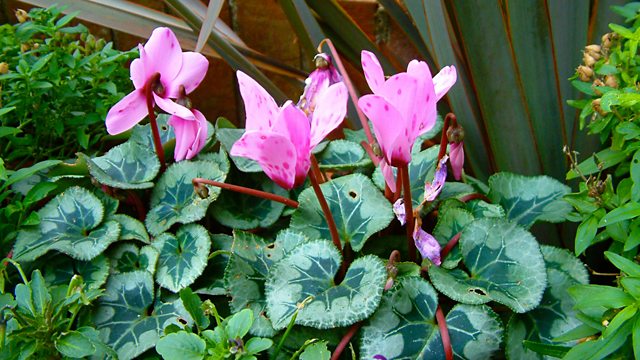Wainfleet
Eric Robson chairs the horticultural panel programme from Wainfleet. Answering questions from local gardeners are Matthew Wilson, Pippa Greenwood and Bunny Guinness.
Eric Robson is in the chair as GQT visits Wainfleet near Skegness. Bunny Guinness, Pippa Greenwood and Matthew Wilson answer the questions from local gardeners.
This week's topical tips focus on sowing poppies, and Bunny Guinness visits a local garden with links to Lord Alfred Tennyson and Rudyard Kipling.
Produced by Howard Shannon.
A Somethin' Else production for 主播大秀 Radio 4.
This week's questions:
Q. Could the panel suggest some perennials for planting in tubs that will be hardy, provide year-round cover and add interest?
A. You will need to plant perennials that can tolerate tricky conditions. A pot will eventually have poor soil and little water due to the plant's canopy. Perhaps plant Mediterranean plants. Try shrubs such as Ceratostigma Willmottianum, a late flowering, low-growing shrub with intense blue flowers. Combine it with an autumn, pink-flowering bulb called Nereen Buldiniae. Grasses are another option, providing a long season and changing appearance. A grass such as Miscanthus Yakushima Dwarf grows to about 1m (3ft) and has great autumn flowers. You could try a new hardy Salvia called Amistad. It grows to about 1m (3ft) high, has inky blue blooms and flowers from May right through until winter. Lavender would add structure if you prune them in August sparking new growth for the winter.
Q. I am planning to turn a small piece of land into an orchard. Is it a waste of time to plant fruit trees if the site has Honey Fungus and old tree stumps?
A. There are several species and strains of Honey Fungus and it can be a gardener's ultimate nightmare. It has the potential to wipe out the majority of woody plants. If there isn't too much destruction on the site it may not be much of a threat, but fruit trees are particularly susceptible to damage. Dig out as many of the stumps as you can so that the fungus has nothing to feed on. Perhaps test the site with a young, feathered, bare root tree and treat it with a lot of care.
Q. How and when can we move a Dracunculus Vulgaris?
A. Dig down deep in spring or autumn, lifting as much of the soil as possible to reduce damage. Choose a protected site similar to that which it was in previously.
Q. Could the panel suggest any plants that will produce a scent similar to that of the Philadelphus Mock Orange?
A. Mexican Orange Blossom Choisya Ternata has a very good smell. Daphnes are renowned for their scent, such as the Daphne Odora Marginata with its mass of pinky-white blossoms. For a different sort of scent, try winter flowering Honeysuckle Lonicera Purpusii or the Winter Box.
Q. Could the panel suggest an evergreen tree for container planting in a sunny courtyard?
A. There are many options, such as Box, Yew, Laurel, Cork Oak, Bay. However, a container will mean that the growth will always be stunted. Try planting straight into the ground for better results. The Quercus Suberqercasuba or Cork Oak would provide a lovely looking bark.
Q. I have four apple trees, all twenty-six stock. The varieties are Discovery, Fiesta, Russet and Howgate Wonder. The trees have not produced any apples and I wondered if I should plant a crab apple as a pollinator.
A. When choosing a pollinator it is important to check that the flowering periods coincide. There will probably be a diverse range across the four varieties. One of the best pollinators is James Grieve.
Q. When is the best time to split up Nerines? They have been in the same position for ten years and didn't bloom well this year.
A. Early spring is probably the best time. They usually thrive when in congested clumps. Choose a very sunny, warm site.
Last on
More episodes
Previous
Broadcasts
- Fri 6 Dec 2013 15:00主播大秀 Radio 4
- Sun 8 Dec 2013 14:00主播大秀 Radio 4
Six of GQT鈥檚 naughtiest gardening innuendos
When Gardeners' Question Time got mucky.
Podcast
-
![]()
Gardeners' Question Time
Horticultural programme featuring a group of gardening experts


